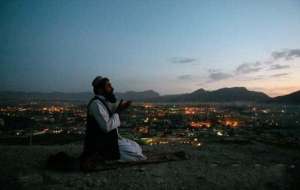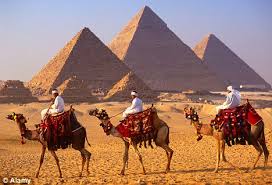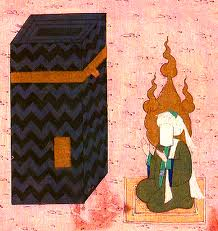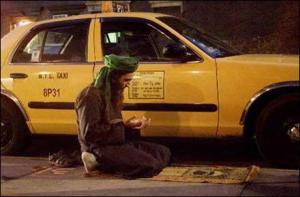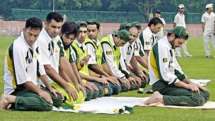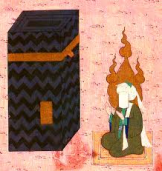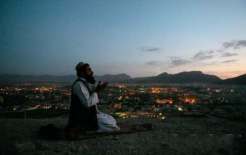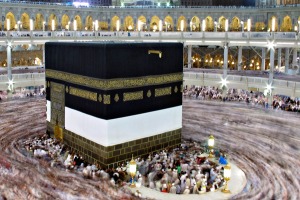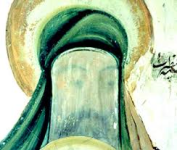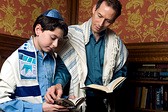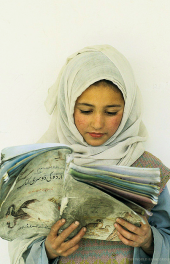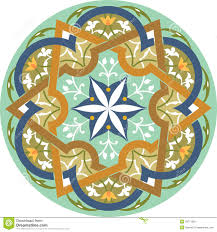 IN MY LAST POST, I promised an Editing Islam discussion about the hijab for women in majority-Muslim countries. But with all that has happened, a discussion about headscarves seems a trivial pursuit. So instead, I am discussing the “doomsday” agenda of ISIS.
IN MY LAST POST, I promised an Editing Islam discussion about the hijab for women in majority-Muslim countries. But with all that has happened, a discussion about headscarves seems a trivial pursuit. So instead, I am discussing the “doomsday” agenda of ISIS.
The Editing Islam posts on this blog are designed to give writers, editors and others in the media an education about Islam. I began to write these blogs after hearing many in the mainstream media (like CNN), who have no animus towards Islam, say things that are just incorrect or uninformed. One would think that 15 years after 9/11, the Western media would have educated themselves about the basic tenets of the Islamic faith.
I RECENTLY READ a book by William McCantis, “The History, Strategy, and Doomsday vision of the Islamic State.” McCantis directs the U.S. Relations with the Islamic World Project at the Brookings Institute; he is also a former U.S. State Department adviser for countering violent extremism. He has a Ph.D. in Near Eastern Studies from Princeton. So this guy knows what he is talking about.
His book has given me much insight into ISIS. I highly recommend it to anyone who just doesn’t “get” ISIS and wonders what type of religious philosophy could condone ISIS’s savagery. Almost all of the info in this post comes from his book. The editorializing, however, is my own.
According to McCantis, one reason why ISIS does what they do is that they are trying to hasten the Islamic version of the apocalypse.
What? I have never heard a terrorism expert discuss ISIS’s apocalyptic viewpoint in the media. Turns out that al-Qaeda shares this belief in the “End of Times.”
 While not in the Quran, Islamic belief has, over the centuries, developed a “doomsday” scenario—an End of Times viewpoint that is similar to that of evangelical Christians.
While not in the Quran, Islamic belief has, over the centuries, developed a “doomsday” scenario—an End of Times viewpoint that is similar to that of evangelical Christians.
SOME ISLAMIC SCHOLARS argue that certain ahadith (reported words of the Prophet) support an End of Times prophesy. And of course no apocalypse can be complete without a savior (called the Madhi in Islam), who would oversee, and fight in, the final battle between good over evil. “In Islamic eschatology, the Mahdi is the prophesied redeemer of Islam who will rule . . . before the Day of Judgment and will rid the world of evil.” (Wikapedia)
So how do you identify the Madhi when he appears? Some Muslims believe that he will be a holy man who is a descendant of the Prophet; some Shi’a believe that it might be one of their mystical imams, and others believe that the Madhi is Jesus Christ. Weird? No. The Quran contains the Bible’s account of Jesus. Muslims view Christians as “People of the Book,” sharing a common history, from Abraham, to Moses, to Jesus, and finally, the Prophet Mohammad. (If you read some of my other posts, I discuss this at length.)
Evangelical Christians and radical Islamists seem to be the only ones who get in a tizzy about the End of Times. For them, Armageddon is imminent, and we need to do something to hasten the coming of the messiah. For example, evangelical Christians give large amounts of money to Israel because of their belief that the End of Times will only come if there is a Jewish state.
According to McCantis, many Muslims view the Islamist hue and cry about the apocalypse like we treat “UFO sightings.” In other words, most Muslims take these prophesies with a grain of salt or, even if they believe in them, do not view the apocalypse as an immediate concern. This situation calls to mind how people in the United States, a Christian-majority country, ignore those people on the street with their “Repent now! The end is nigh!” signs. The world may end one day—but not today. So let’s go buy a bunch or stuff—maybe a new car for Christmas!
THE LEADERS of both al-Qaeda and ISIS hold these Islamic apocalyptic beliefs. That’s what unites them. However, they differ on the method for hastening the emergence of the Madhi and the End of Times. And once you understand this difference, you can begin to understand the “method to the madness” of ISIS.
Here are a variety of Islamic beliefs about what must happen before the Madhi will appear and begin the chain of events that brings about the apocalypse:
- The whole world and all countries become Islamic
- One true Islamic state (caliphate) is created
- There is a battle between Islam and the West
- There is war and tribulation within the Islamic world (Muslims fighting Muslims)
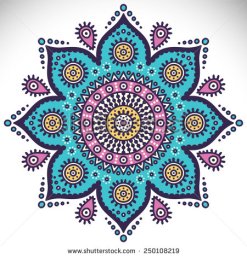 DOCUMENTS OBTAINED by the United States and other countries, as well as those leaked from within the al-Qaeda and ISIS camps, show that each side has a radically different view about how to hasten the coming of the Mahdi.
DOCUMENTS OBTAINED by the United States and other countries, as well as those leaked from within the al-Qaeda and ISIS camps, show that each side has a radically different view about how to hasten the coming of the Mahdi.
When Abu Mus’ab al-Zarquawi, the “founder” of what would later be called ISIS, wrote to Osama bin Laden asking that his group become an al-Qaeda affiliate in Iraq and Syria, bin Laden was reluctant to let them join up. Why? Even then, bin Laden believed that this new group was so violent that it would only exacerbate divisions between fellow Muslims around the world. However, eventually, bin Laden and his advisors decided to let this group join the organization and call themselves “al-Qaeda in Iran and Syria.” Bin Laden and al-Qaeda would come to regret this decision. Bin Laden would discover that this new group was totally uncontrollable—likening them to little children who will not obey their parents.
 ONE PROBLEM for both al-Qaeda and the new hatchling, al-Qaeda in Iraq and Syria, was that they disagreed about hastening the End of Times, when they would fight with the Mahdi in the final battle. The al-Qaeda approach was to rally all Muslims to the cause by creating affiliates in every country. Bin Laden’s approach was to “win the hearts and minds” of Muslims so that there would be a giant Muslim army when the inevitable war with the West came about. He advised against fighting between different Islamist groups, arguing that they would all be needed for the coming war between the West and Islam.
ONE PROBLEM for both al-Qaeda and the new hatchling, al-Qaeda in Iraq and Syria, was that they disagreed about hastening the End of Times, when they would fight with the Mahdi in the final battle. The al-Qaeda approach was to rally all Muslims to the cause by creating affiliates in every country. Bin Laden’s approach was to “win the hearts and minds” of Muslims so that there would be a giant Muslim army when the inevitable war with the West came about. He advised against fighting between different Islamist groups, arguing that they would all be needed for the coming war between the West and Islam.
For example, bin Laden counseled its affiliates to introduce the strict Sharia “huddud” punishments listed in the Quran gradually; applying strict punishments immediately to populations that did not yet understand Sharia law would cause people to rebel against al-Qaeda. For example, Don’t give a guy 40 lashes for drinking when he did not even know that it was prohibited by Sharia law. Bin Laden also counseled al-Qaeda affiliates to “win the hearts and minds” of the people by giving them food, shelter, social order and a working economy. (Surprisingly, if you read this book and the correspondence between Osama bin Laden and the early leader of the nascent ISIS— Abu Mus’ab al-Zarquawi , bin Laden comes out looking like a human-rights advocate—at least for Muslims.)
 Bin Laden and al-Qaeda were proponents of the West vs. Islam theory of the apocalypse. In considering this, the reason for the 9/11 attacks makes perfect sense. Those in the United States ask, “Why do they hate us?” In fact, some of them may not hate us—they just want to hasten the appearance of the Mahdi and the End of Days.
Bin Laden and al-Qaeda were proponents of the West vs. Islam theory of the apocalypse. In considering this, the reason for the 9/11 attacks makes perfect sense. Those in the United States ask, “Why do they hate us?” In fact, some of them may not hate us—they just want to hasten the appearance of the Mahdi and the End of Days.
But, reality check, al-Qaeda pretty much do hate us.
BIN LADEN and his right-hand al-Qaeda leader Ayman al-Zawahiri were constantly urging al-Qaeda in Iraq to act less violently against Muslims that did not share their beliefs, as well as non-Muslims. In addition, bin Laden counseled that, if you must do any beheading, follow the example of Saudi Arabia. In Saudi Arabia, where the strict Wahhabi ideology mirrors that of ISIS, they do their beheading, stoning, and lashing in private. But al-Qaeda in Iraq was applying “huddud”-like punishments in front of the world. However, I think that we can easily say that 99% of the people killed by ISIS were killed not because of Sharia law, but because they were just in the wrong place at the wrong time; did not believe in the ISIS ideology; were in ISIS’s path of conquest; or were Westerners, especially Western journalists, whose murder has high propaganda appeal. These human-rights abuses are a way for ISIS to strike fear in the hearts of both Muslims and the West.
The repugnance of the violence committed by al-Qaeda in Iraq and Syria, eventually led to its expulsion from al-Qaeda. Too violent even for al-Qaeda. Imagine that.
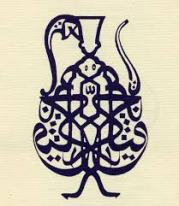 But the leaders of the now-defunct al-Qaeda in Iraq and Syria probably felt liberated. They did not share al-Qaeda’s apocalyptic version of bin Laden—that all Muslims must rally around the flag and hasten the war between the West and Islam. Instead, they believed in one of the other End of Times prophesies—that only when a true Islamic caliphate was established, would the Madhi arrive.
But the leaders of the now-defunct al-Qaeda in Iraq and Syria probably felt liberated. They did not share al-Qaeda’s apocalyptic version of bin Laden—that all Muslims must rally around the flag and hasten the war between the West and Islam. Instead, they believed in one of the other End of Times prophesies—that only when a true Islamic caliphate was established, would the Madhi arrive.
After being thrown out of al-Qaeda, al-Zarquawi and his gang changed their name to the Islamic State in Iraq and Syria (ISIS). He and his immediate successor were killed by the United States. The current ISIS leader is the secretive, rarely seen Abu Bakr al-Baghdadi.
For the Islamic State, it is the true caliphate or nothing—and by any means necessary. Therefore, in the beginning, ISIS focused more on conquering territory for the caliphate than on perpetuating terror in the West. Any person or group that did not “bend the knee” to ISIS was exterminated.
WE HAVE ALL witnessed horrible scenes on the news of mass graves full of unburied bodies murdered by ISIS. The photos remind me of those of the Holocaust. Is ISIS as cruel to its “enemies” as Hitler was to the Jews and other “undesirables”? You bet. The similarities between the rise of the Nazis and the rise of ISIS are eerily similar. When the Nazis first formed and began recruiting, most Germans thought that the Nazis would never come to power because they were too extreme. They thought that their Jew-hating was just propaganda (although many secretly did hate Jews). So Germans bided their time hoping that the Nazis would go away. But they got stronger and stronger—many violent people and anti-Semites were attracted by their extreme violence. The United States bided its time too, underestimating the Nazi threat until the Nazis were in power.
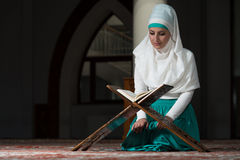 THE ISLAMIC STATE, now headed by Abu Bakr al-Baghdadi, promises its recruits participation in nothing less than the ultimate contest between good and evil. ISIS members will be right there fighting with the Mahdi when it all happens. Islamic State’s martyrs will go to paradise. But they don’t have to wait for Paradise for beautiful virgins. ISIS will give them a “bride” now. Amazingly, young women are also joining the ranks of ISIS, dreaming of becoming fighters and/or “brides.”
THE ISLAMIC STATE, now headed by Abu Bakr al-Baghdadi, promises its recruits participation in nothing less than the ultimate contest between good and evil. ISIS members will be right there fighting with the Mahdi when it all happens. Islamic State’s martyrs will go to paradise. But they don’t have to wait for Paradise for beautiful virgins. ISIS will give them a “bride” now. Amazingly, young women are also joining the ranks of ISIS, dreaming of becoming fighters and/or “brides.”
No one thought ISIS would go anywhere. Bin Laden believed that its violence would never be accepted. In the United States, al-Qaeda was the giant cobra to be destroyed—but no one looked for the little asp that was growing in the weeds of Iraq and Syria. The Islamic State grew not only because of its apocalyptic views and ultraviolence, but also because the United States created a power vacuum when it left Iraq. I think we all can admit that. We didn’t know how dangerous this little snake was. The people of the United States wanted an end to a war that had lasted for over a decade and had accomplished nothing. I too held that position. We should never have gone into Iraq under Bush I or Bush II. All we did is make it worse—and the result is thousands of dead and wounded brave men and women, who were just doing what they believed was in the interest of the their country.
The wages of Iraq wars are the bodies of our children. They died for nothing.
AND WHEN THE United States, or any other interested country, finally decides to put “boots on the ground,” they will find only quicksand. Why don’t we let the other Muslim-majority countries fight the Islamic State themselves? Why don’t “moderate” Muslims and their countries fight to take back the soul of Islam?
Maybe for them the apocalypse is now . . .
WHAT TO DO? I would advocate just leaving the Middle East and the Muslim world alone. We will never “win” anything there.
Everything we have done there since 9/11 has made it worse. Just leave the Middle East the fuck alone.

